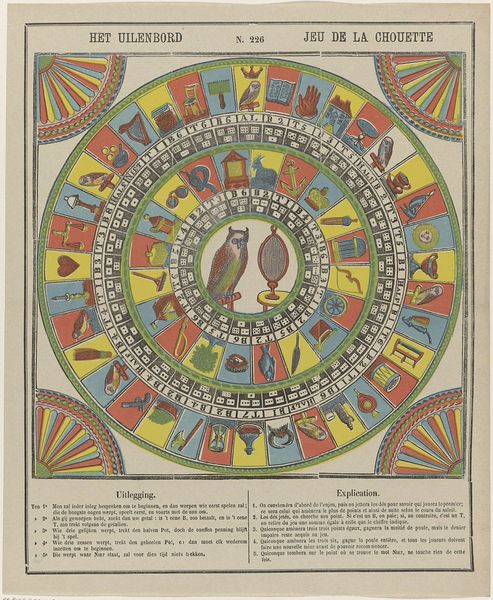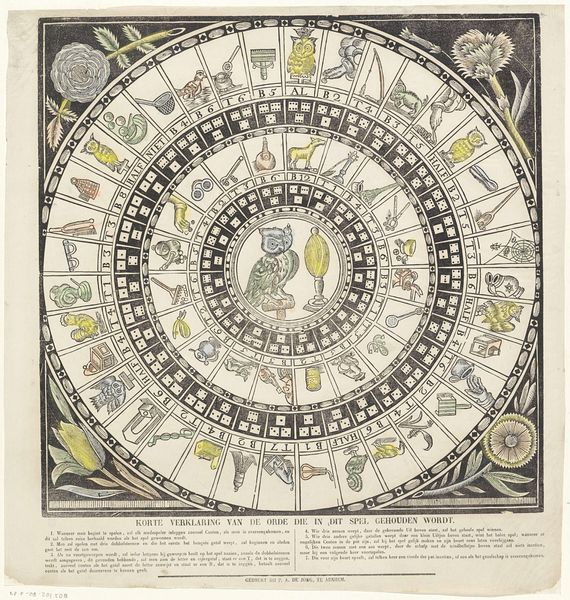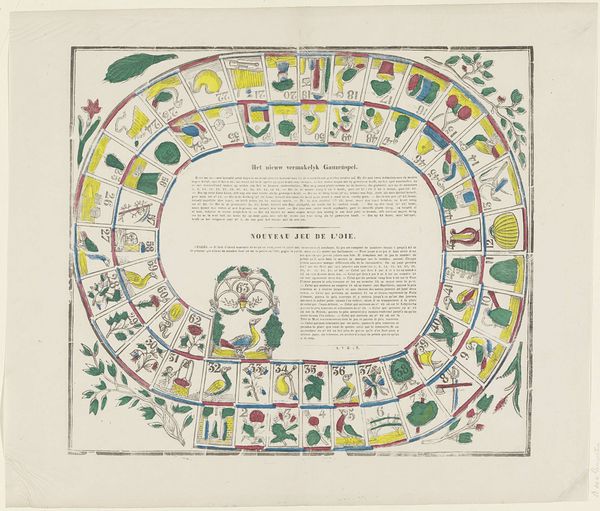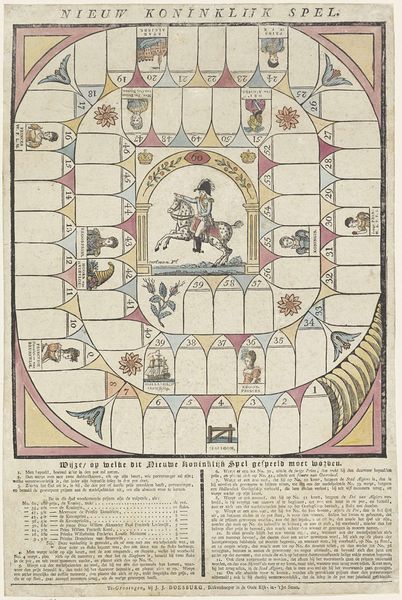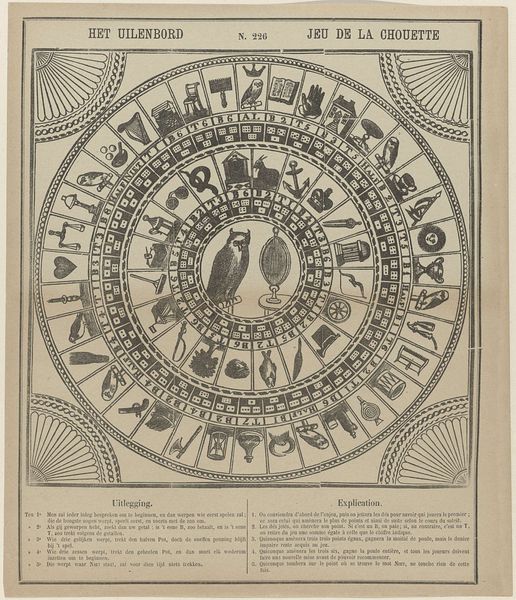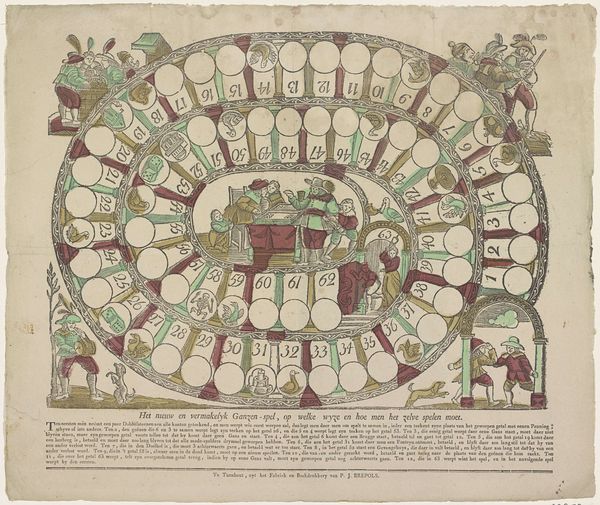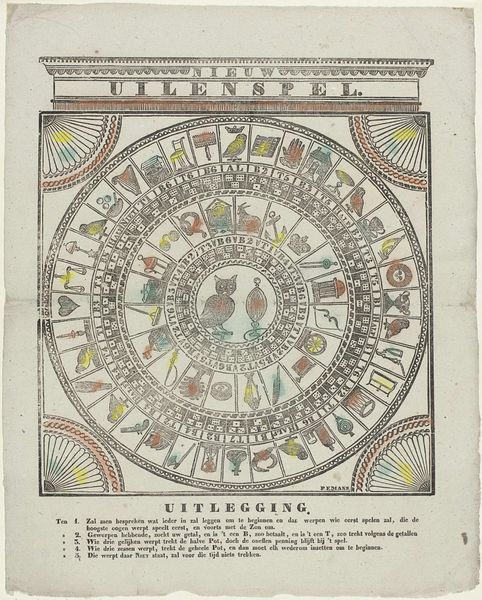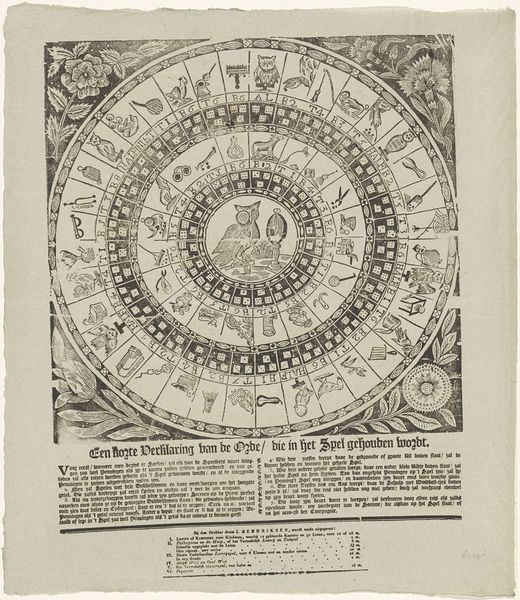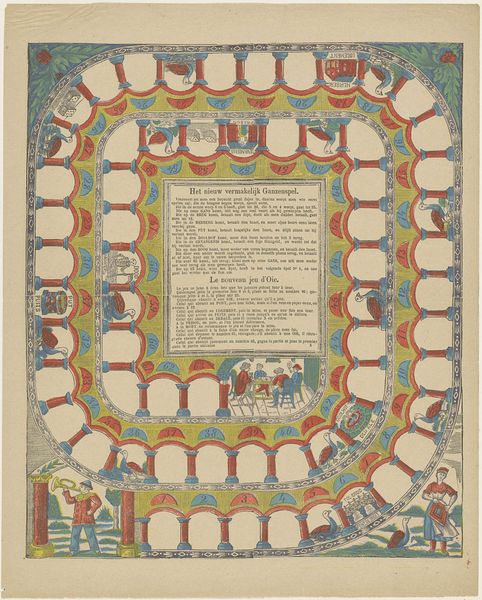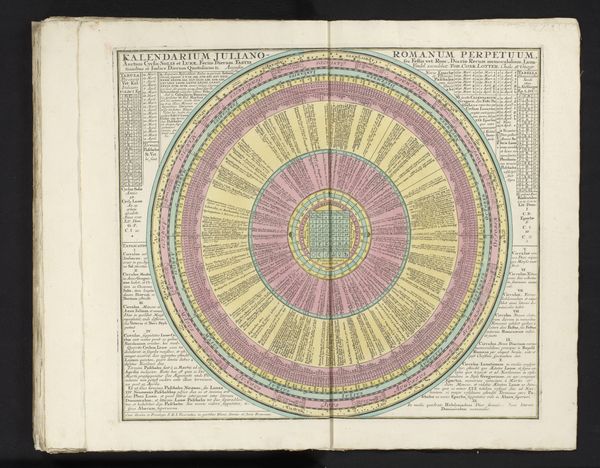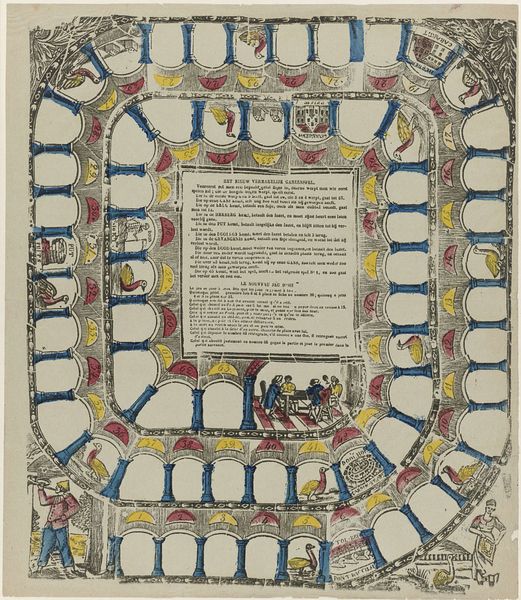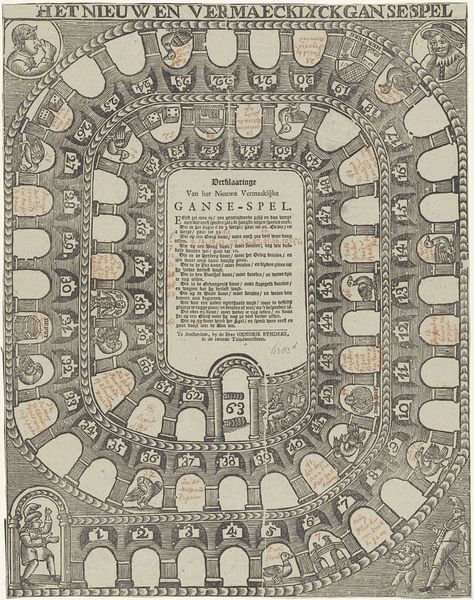
Dimensions: height 417 mm, width 347 mm
Copyright: Rijks Museum: Open Domain
Editor: This is “Het uilenbord / Jeu de la chouette”, or "The owl board" created between 1800 and 1833 by Philippus Jacobus Brepols. It’s an engraving and it looks like some kind of game board. What strikes me is how this object blurs the lines between art, play, and knowledge. How do you see the cultural function of this “game” Curator? Curator: It's fascinating how you pick up on that ambiguity. In the 19th century, printed games like this were incredibly popular, functioning as both entertainment and education tools. Consider the context: mass production of printed material was relatively new, opening up art to a wider audience, but with that came new efforts to subtly teach certain cultural norms and reinforce specific types of knowledge through play. The board itself—notice the duality in the titles being written in two languages; Dutch and French - suggesting the intent of its consumption by different cultural groups. How might social class and literacy play into who engages with this “game”? Editor: So, it's more than just a simple pastime, but also reflects something about the dynamics of society at the time? The players would presumably need to be literate or have someone read it out for them. I guess that excludes a whole section of the public at the time... Did games like this help socialize children into different societal roles and knowledge sets, I wonder? Curator: Exactly! It shows how these visual formats worked within socio-political power structures and conveyed acceptable practices of engagement in society. Even the choice of imagery tells a story. Editor: I’ll never look at board games the same way again! It’s not just fun and games… it tells a cultural story too! Thanks, Curator!
Comments
No comments
Be the first to comment and join the conversation on the ultimate creative platform.
